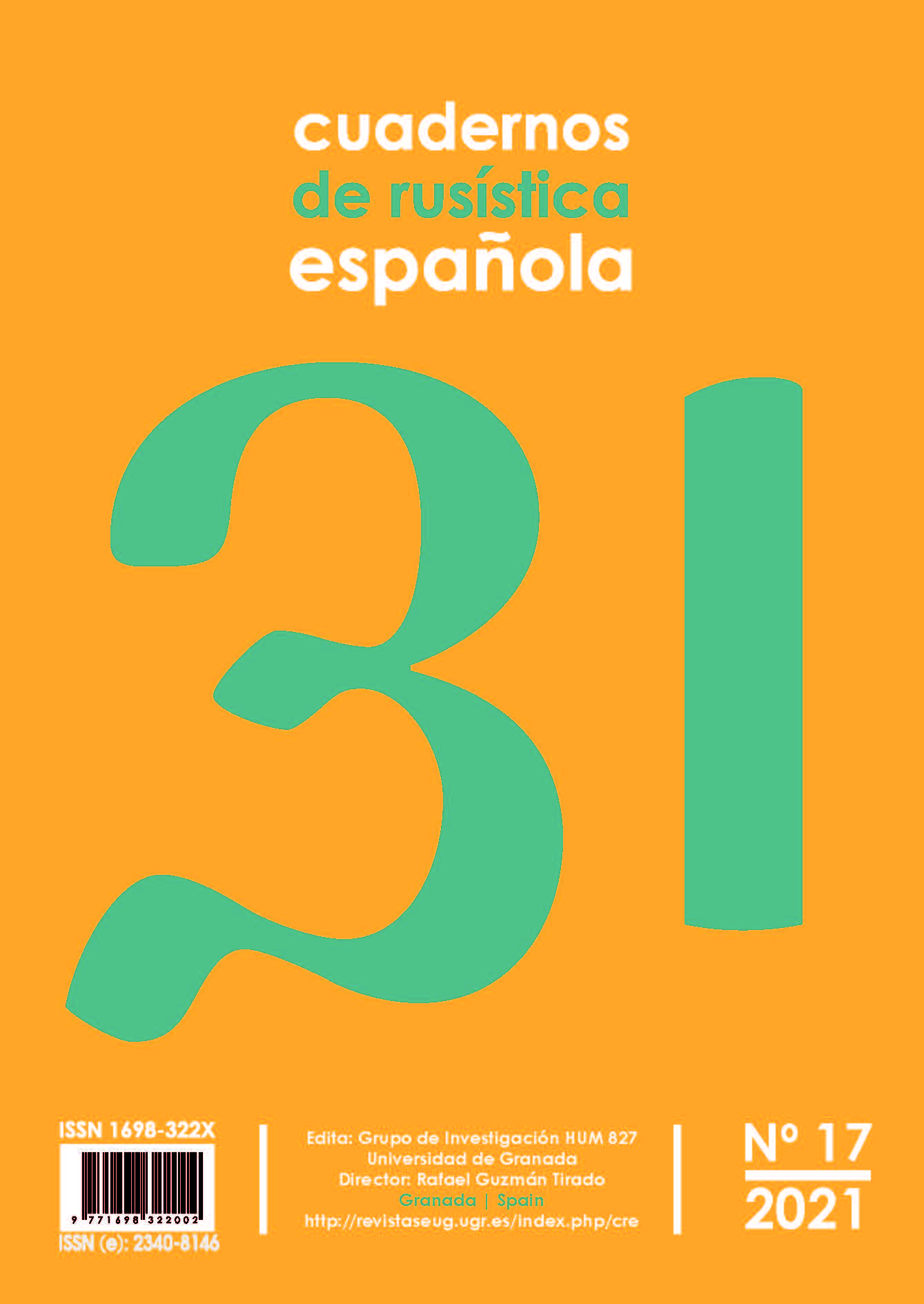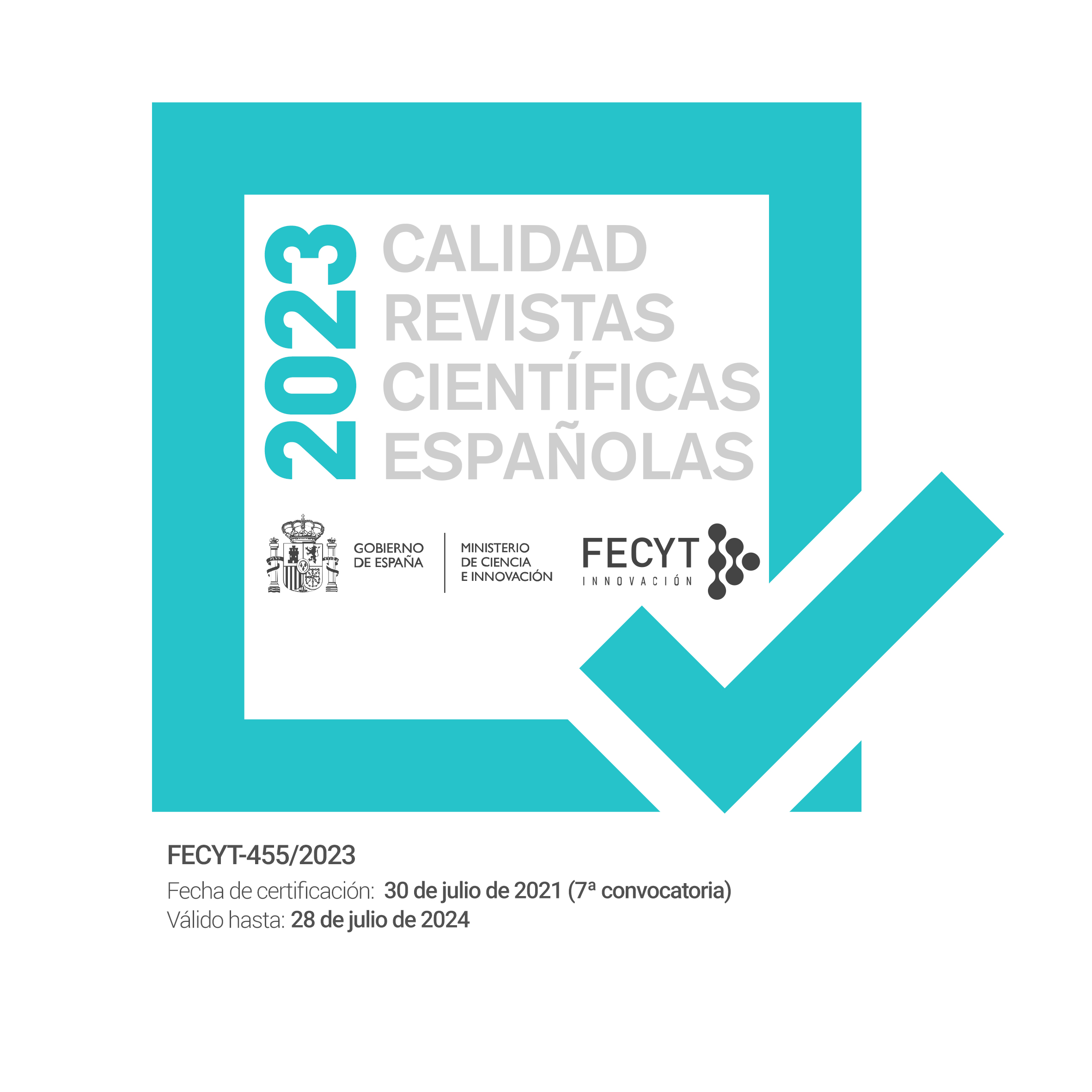The Space of Certainty and Uncertainty in a Poetic Text (Based on the Poem “Violinist” by O. Mandelstam)
DOI:
https://doi.org/10.30827/cre.v17.21103Keywords:
Mandelstam, the principle of certainty-uncertainty, closed-open semiotic systemAbstract
The article discusses ways of organizing space in poetic text. Osip Mandelstam's poem “The Violinist” was chosen as the object of analysis. Various interpretations of the poem are considered, an original interpretation is proposed, the purpose of which was to answer the question of who is meant by the ‘fourth devil’. Relying on biographical, historical and cultural methods, using the methodology of the semiotic approach and intertextual analysis, the author proves that the architectonics of the poetic test is based on the principle of certainty-uncertainty, which serves as a balance between constants and variable structural units that allow a reader to offer an infinite number of assumptions, more or less close to the poet's intention, but never become the only one. It is possible because of variable units that the reader is included in the process of incrementing new meanings. Such a model is the key to the viability of poetic text.
Downloads
References
AVERINTSEV, S. S. (2011). «My – smysloviki…». Averintsev i Mandelshtam: Stati i materialy. Moskva: RGGU. S. 19-24.
BILLINGTON, J. H. (1966). The Icon and the Axe: An Interpretive History of Russian Culture. New York: Alfred A. Knopf.
BYKOV, D. L. (2019). Vremya potryaseniy. 1900-1950 gg. Moskva: Eksmo.
BYKOV, D. L. (2017). Odin. Sto nochej s chitatelem. Moskva: ACT.
GASPAROV, M.L. (1995). Izbrannyie stati. Moskva: NLO. S. 327-370.
KUPER, Dzh. (1995). Ehnciklopediya simvolov. Moskva: Zolotoj Vek.
LJREADER2. (2012, July 26). Tayna «koshachey golovyi» iz stihotvoreniya Mandelshtama (dopolnenie). Retrieved from https://ljreader2.livejournal.com/13754.html (15.01.2021).
MANDELSHTAM, O. (2020). Polnoe sobranie sochineniy. V 3 tomah. T.1: Stihotvoreniya. Sankt-Peterburg: Progress-Plejada.
MERLIN, V. (2015). Kabbala i russkoe slovo: Prostranstva sovmestnosti. Moskva: Yazyiki slavyanskoy kulturyi.
NORMAN, B. Yu. (2014). Kommunikatsiya bez ponimaniya. Uralskiy filologicheskiy vestnik. Seriya: Yazyik. sistema. lichnost: lingvistika kreativa. № 1. S. 4-14.
PUSHKIN, A. S. (1962). Sobranie sochineniy v 10 tomah. T. 6: Kritika i publitsistika. Moskva: GIHL.
SHORINA, E. V. (2016). Analiz poeticheskogo teksta: O. Mandelshtam «Za Paganini dlinnopalyim…» («Skripachka»). NovaInfo. T. 1, № 40. S.147-155.
SOBOLEVA, L. I. (2013). Foneticheskie strukturyi poeticheskogo teksta i ih semioticheskie funktsii. Studia Slavica Savariensia, № 1-2. S. 427-438.
STRUVE, N. A. (1992). Osip Mandelshtam. Tomsk: Vodoley.
TIBALDI-K'EZA, M. (2008). Paganini. Moskva: Molodaya gvardiya.
TSVETAEVA, M. I. (1994). Sobranie sochineniy. V 7 tomah. T.1. Moskva: Ellis Lak.
TSVETAEVA, M. I. (1995). Sobranie sochineniy. V 7 tomah. T.6: Pisma. Moskva: Ellis Lak.
VATSURO, V. E. (1979). Literaturnye al'bomy v sobranii Pushkinskogo Doma (1750–1840-e gody). Ezhegodnik Rukopisnogo otdela Pushkinskogo Doma na 1977 god. Leningrad: Nauka. S. 3-56.
VOLKOV, S. М. (2006). Dialogi s Iosifom Brodskim. Moskva: Eksmo.
ZENKEVICH, M. A. (1994). Nokaut. V kn.: Skazochnaya era. Stihotvoreniya. Povest. Belletristika, memuaryi. Moskva: Shkola-Press. Retrieved from http://www.hiperinfo.ru/publ/gumanitarnye_nauki/mikhail_aleksandrovich_zenkevich_6/4-1-0-17852 (21.12.2020).
ZUBOVA, L. V. (2010). Yazyiki sovremennoy poezii. Moskva: NLO.












